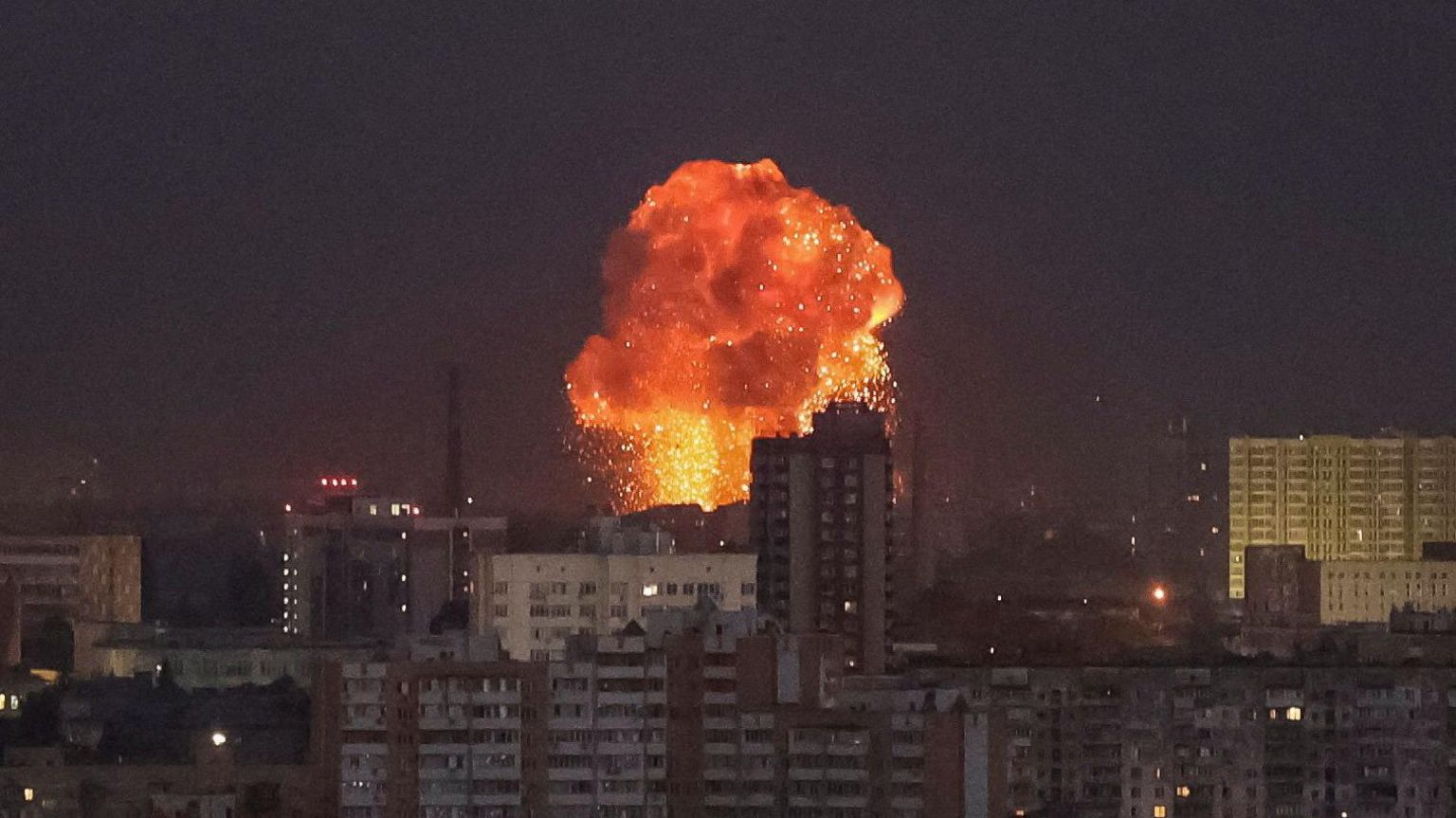- Russian missiles targeted Kyiv on the first day of the school year, causing damage to schools, a university, and a metro station used as a shelter (bbc.com).
- Ukraine's air force reported downing 22 cruise and ballistic missiles, while debris injured three people in Kyiv (dw.com).
- Explosions were reported in Kyiv and several other cities as Russia conducted its third large-scale bombardment in a week (nytimes.com).
- Russian President Putin stated that Ukraine's incursion into the Kursk region will not stop Russian offensives in the Donbas (nbcnews.com).
- Ukrainian President Zelensky emphasized the importance of children returning to school, despite the ongoing conflict (apnews.com).
Russian missile strikes targeted Kyiv on the first day of the school year, damaging key civilian infrastructure including schools, a university, and a metro station used as a shelter. Despite the ongoing conflict, Ukrainian authorities and citizens are striving to maintain normalcy for children returning to school. The strikes highlight the ongoing risks to civilians and the determination of Ukrainians to continue their daily lives in the face of aggression.
Ukraine's air defense successfully intercepted and destroyed 22 Russian cruise and ballistic missiles targeting Kyiv. While this prevented potentially greater damage and casualties, debris from the downed missiles still caused injuries and destruction in the city. The effectiveness of Ukraine's air defense plays a crucial role in mitigating the impact of Russian assaults on civilian areas, showcasing the resilience and preparedness of Ukrainian forces.
The conflict continues to escalate in the Donbas and Kursk regions, with Russian forces advancing in the Donbas while Ukrainian forces carry out incursions into Russia's Kursk region. Russian President Putin insists that the Kursk offensive will not hinder Russia's objectives in eastern Ukraine, while Ukrainian President Zelensky maintains that the incursion aims to create a buffer zone to reduce pressure on the eastern front. This ongoing military tension underscores the deepening conflict and the strategic maneuvers by both sides.
Details
Security
Bias
Deltas
On the first day of the school year in Ukraine, Russian forces launched a large-scale missile and drone attack on the capital city, Kyiv, as well as other cities across the country. The assault targeted civilian infrastructure, including schools, a university, and a metro station used as a bomb shelter, causing significant damage and leaving multiple people injured. According to bbc.com, Ukrainian authorities reported that despite the missile strikes, many children returned to school that day, an important cultural moment in Ukraine. In an effort to maintain a sense of normalcy, teachers and parents did their best to celebrate the occasion with the children, though the fear and tension were palpable among the citizens. The missile attack also caused explosions in various districts of Kyiv, with debris from intercepted missiles damaging cars and buildings, as dw.com reported.
Ukraine's air defense forces responded by intercepting and destroying many of the incoming missiles and drones. The Ukrainian Air Force confirmed that they had downed 22 cruise and ballistic missiles and 20 drones that were launched by Russian forces. While this prevented further potential destruction and loss of life, debris from the downed missiles still caused injuries and damage in several districts of Kyiv, according to dw.com. The effectiveness of Ukraine's air defense system has been critical in mitigating the impact of Russia’s ongoing aerial assaults, which have become increasingly frequent and intense in recent weeks.
The missile strikes on Kyiv are part of a broader and escalating conflict between Ukraine and Russia, with significant military actions also taking place in the Donbas and Kursk regions. According to nbcnews.com, Russian forces have intensified their offensive in the Donbas region, capturing more territory than they have in recent months. Russian President Vladimir Putin commented that Ukraine's recent incursions into the Kursk region of Russia have not slowed down their advances in the Donbas. Putin emphasized that Russia’s main objective remains to secure key territories in eastern Ukraine, a goal that he claims the Ukrainian forces have failed to obstruct.
Meanwhile, Ukrainian President Volodymyr Zelensky has defended the incursions into the Kursk region, stating that these actions are part of a strategic plan to create a buffer zone that could help reduce the pressure on Ukraine’s eastern frontlines. As nytimes.com reported, these incursions have drawn some of Russia’s most combat-ready brigades away from the Donbas, potentially easing the burden on Ukrainian forces in that region. However, the conflict remains intense, with both sides engaging in regular long-range drone and missile strikes, indicating that neither Russia nor Ukraine is close to considering peace talks or de-escalation at this time.
The ongoing conflict has had a profound impact on the daily lives of Ukrainians, particularly on children and their education. Many schools in cities near the frontlines have been forced to operate online due to the constant threat of airstrikes, while schools that remain open in Kyiv and other areas are required to have bomb shelters for the safety of the students. Despite these challenges, the Ukrainian government and its people continue to demonstrate resilience, striving to provide a semblance of normal life for their children even as the war continues. According to apnews.com, Ukrainian President Zelensky expressed his determination to ensure that children have access to education, seeing it as a symbol of the strength and perseverance of the Ukrainian nation.
Negative
Sentiment
Neutral
Sentiment
Positive
Sentiment


